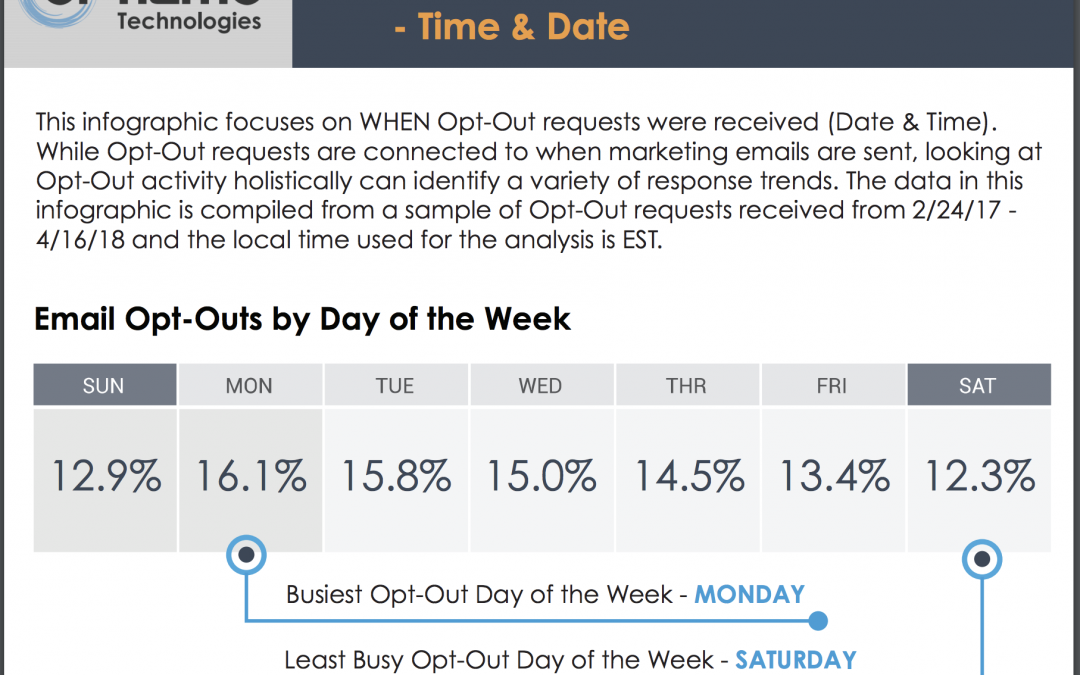Email Marketing Tip – Timing Your Email Campaigns
Often, the success of a marketing campaign comes down to timing. Every marketer knows the value of having your marketing message delivered to your audience when they are prepared to make a buying decision. However, making that happen hinges on knowing the answer to a key question – “when is the right time to get your offer or marketing message in front of your audience?”
In email marketing, unlike many other marketing channels, marketers have fairly tight control over when a message will appear in a recipient’s inbox, even if it is then up to the recipient as to when (or if) they actually open and engage with an email. Still, being able to decide when an email is delivered is a very valuable proposition. So, what information should marketers use to guide this decision?
Day of the Week
The industry is filled with studies showing average email performance and response data by day of the week. (You can check out some of OPTIZMO’s data on Opt-Out activity by Day of the Week in our most recent infographic.) Email marketers also have their own historical campaign data to rely on. Finally, there is conventional wisdom within the email marketing industry about which days are best or worst for sending email campaigns.
The fact of the matter is there is no definitive answer to which day of the week is ‘best’ for sending an email campaign. It varies by industry, offer type, and most significantly by audience preferences. While a typical rule of thumb to not send on weekends, Mondays, and Fridays may be a reasonable starting point, your individual campaigns may very well show entirely different performance trends. The best advice here is to evaluate your own historical campaign data and then test to verify trends or indicators related to which day delivers the best performance.
Time of Day (for each recipient)
While there may be significant variation in which weekday works best for your email campaign deployment, time of day can be a bit more consistent. The key is to base your analysis on time of day not by what time it is for you when you send the email, but what time it is for each recipient when the email reaches their inbox. As always, there are exceptions, but by and large, emails that are sent during the hours that your recipients are awake and likely ready and able to check their inboxes are going to be more successful. So, the question is, when are your recipients in the mode to check their email and engage with your messages? This will depend on the makeup and demographics of your audience. For typical consumers, standard daytime hours are likely a good place to start. However, if your audience is made up of younger gamers who like to play overnight, then you might consider a different range. From an opt-out standpoint, we see activity tend to pick up starting in the early morning, peak around lunchtime and then slowly taper off into the late afternoon and early evening. This is a solid indicator of when consumers are checking their inboxes during the day.
There are definitely additional factors playing into the timing of your email campaigns (such as recipient activity, any timing specifics of your offer, seasonality, etc.), but keeping an eye on the day of the week and time of day are good elements to keep in mind as you plan your next email campaign.

